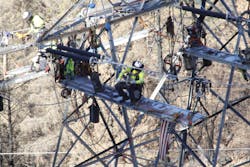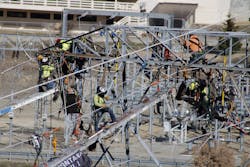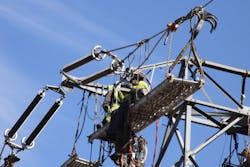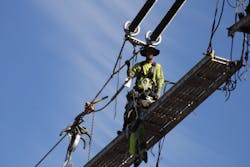Reconductoring vs Rebuilding: SCE's Experience
This is certainly an exciting time to be in the power delivery business. Demand for power is expected to grow by more than 50% by mid-century and there are a number of major initiatives to improve grid reliability and help fulfill California’s vision for a clean energy future. For many in the industry, including Southern California Edison (SCE), there is rarely a dull moment. Add to that very dry and windy conditions that wreak havoc in our fire-prone service territory. Despite all of this, and the impact of the Covid-19 pandemic, SCE is working hard to keep the lights on and prepare for the future every day. The 15 million people we serve are counting on us.
As you are surely aware, building new transmission lines is no simple task. There are huge challenges for everyone involved, from the planners who have to accurately predict long-term demand and load flow to environmental experts who have to develop impact assessments and mitigation plans. Not to mention the engineering and construction aspects of the project.
Fortunately, in many instances, existing corridors can be upgraded to transmit more power. In the past, this generally required removing everything and starting over. Towers, poles, foundations and wires. It all had to be removed and replaced with higher capacity (larger heavier) conductors supported by taller structures placed on larger foundations. As you can imagine, access to some of these transmission lines is often very difficult with many environmental and topographical challenges that translate to substantial costs.
The good news is that SCE has been very successful using modern power line conductors that no longer use steel reinforcement to support the conductive aluminum strands. These classic conductors (designed more than 100 years ago) were referred to as “ACSR” (Aluminum Conductor Steel Reinforced). New conductor designs now use carbon-fiber cores which are about 50% stronger and 70% lighter than steel cores. One of the most common types selected by SCE is called the “ACCC” Conductor (Aluminum Conductor Composite Core). The lighter weight composite core allows this design to utilize ~30% more conductive aluminum. The added aluminum content helps reduce electrical resistance and deliver more power more efficiently.
A key benefit of this design is that the aerospace-derived carbon-fiber core does not stretch like steel when it heats up. If you have ever driven down the highway and seen sagging power lines, there is a very good chance that line is carrying lots of power. The reason for excessive sag is that power line wires heat up because of the electrical resistance of the conductor. That heat causes the wires to stretch and sag. SCE is working hard to replace old wires that may exceed safe clearance limits when conductors are delivering large amounts of power.
The new ACCC conductors can carry up to twice the power of legacy conductors, with far less sag. These conductors now make reconductoring a significantly more cost-effective and quicker alternative to rebuilding and constructing transmission project. It also eliminates the environmental impact of new transmission lines.
A good example of this efficiency is SCE’s reconductoring project on the double-circuit 230-kV Rector to Vestal lines and the adjacent 230-kV Vestal to Magunden lines in the Big Creek Transmission Corridor. Implementing the ACCC conductors saved customers more than US$85 million dollars in lieu of a project that uses conventional ACSR conductors to increase line capacity and fully resolve sag infractions.
Reconductoring with the ACCC also reduced construction time from an estimated 48 months to 18 months — freeing up SCE resources and crews to focus on other projects. This reconductor project increased line capacity from 936 amps to 1,520 amps, which has huge transmission grid reliability impacts at the independent system operator level. The company continues to perform ACCC reconductoring in the Big Creek Corridor as well as other transmission lines throughout its service territory.
About the Author
Mustafa Ali
Mustafa Ali works for Southern California Edison.




